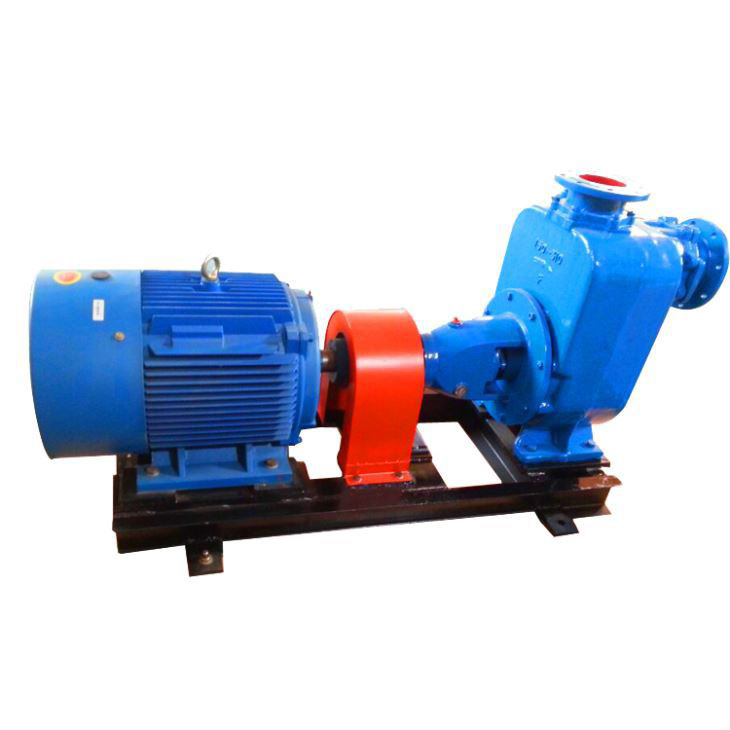There are many structural types of self-priming pumps. Among them, the working principle of the external-mixing self-priming pump is: fill the pump casing with water before starting the pump (or there is water in the pump casing itself). After starting, the impeller winds at a high speed to make the water in the impeller channel flow to the volute. At that time, the outlet forms a vacuum, so that the water inlet check door is opened, and the atmosphere in the suction pipe enters the pump and reaches the outer edge through the impeller channel. On the other side, the water discharged into the air-water combination chamber by the impeller flows back to the outer edge of the impeller through the left and right return holes. The water flowing back from the left return hole is ejected into the impeller channel under the action of pressure difference and gravity, and is crushed by the impeller. After mixing with the atmosphere from the suction pipe, it is thrown to the volute and fixed to the winding position. Then it gathers with the water flowing from the right return hole and fixes it along the volute. Because the liquid has been charging and trapping the cascade in the volute, it has been crushed by the impeller, and it is strongly stirred and mixed with the atmosphere to form a gas-water mixture, which is constantly fixed so that the gas and water cannot combine. The mixture is peeled off by the tongue at the entrance of the volute and enters the bonding chamber along the short tube. In the combining chamber, the atmosphere is combined in and discharged from the inlet pipe, while the water still flows to the outer edge of the impeller through the left and right return holes, and is mixed with the atmosphere in the suction pipe. Repeat the cycle in this way to gradually exhaust the atmosphere in the suction pipeline, so that the water enters the pump and realizes self-priming.

The working principle of internal mixing self-priming pump is opposite to that of external mixing self-priming pump. The difference is that the return water does not flow to the outer edge of the impeller, but to the outlet of the impeller. When the internal-mixing self-priming pump is started, the warm-up valve under the front of the impeller must be opened to make the liquid in the pump flow back to the outlet of the impeller. Under the action of the high-speed rotation of the impeller, the water mixes with the atmosphere from the suction pipe to form a gas-water mixture and discharge to the combining chamber. There the atmosphere is exhausted and the water returns from the heating valve to the impeller outlet. This is repeated until the atmosphere is exhausted, and the inhalation goes back.
The level of self-priming of the self-priming pump has nothing to do with the front seal clearance of the impeller, the number of revolutions of the pump, and the level of the liquid level in the combining chamber. The smaller the front seal clearance of the impeller, the greater the self-priming height, which is normally 0.3~0.5 mm; when the clearance increases, the pump elevation and efficiency will increase except for the self-priming height. The pump’s self-priming height increases with the increase of the circumferential progress u2 of the impeller, but when the maximum self-priming height is reached, the number of revolutions increases and the self-priming height does not increase anymore. At this time, it just shortens the self-priming time; when the number of revolutions When it rises, the level of self-priming rises. Under the condition that other conditions remain unchanged, the level of self-priming also increases with the increase in the level of water storage (but it also makes it no better than the optimal water level of the combined chamber). In order to better mix the air and water in the self-priming pump, the blades of the impeller must be smaller to increase the pitch of the cascade; and semi-open impellers (or impellers with wider impeller channels) should be adopted, which is more It is inconvenient for the backwater to shoot deeply into the impeller cascade.
Post time: 2022-01-06











